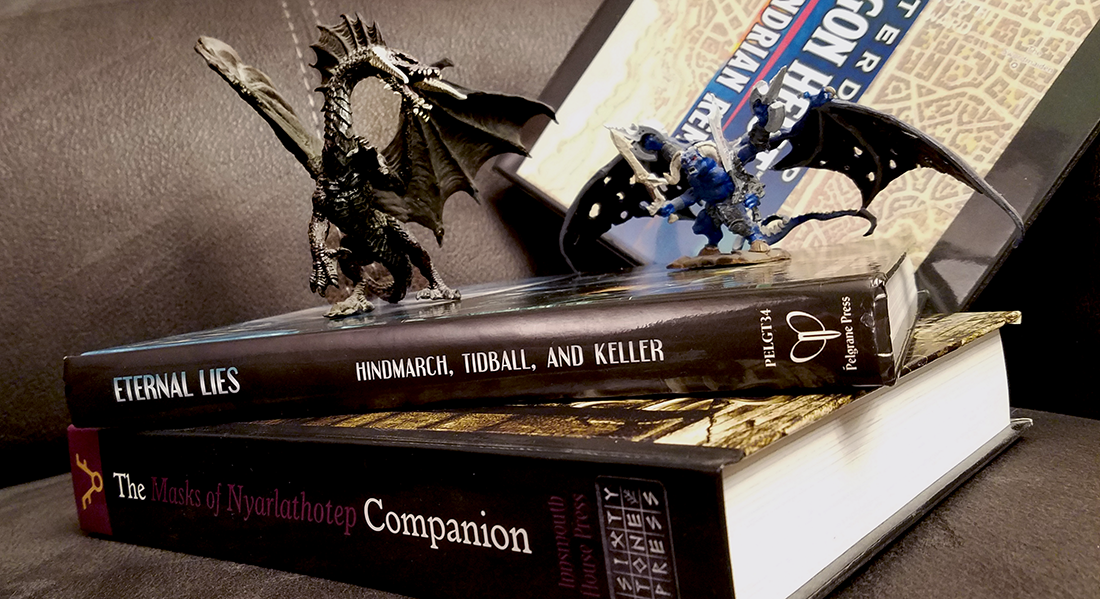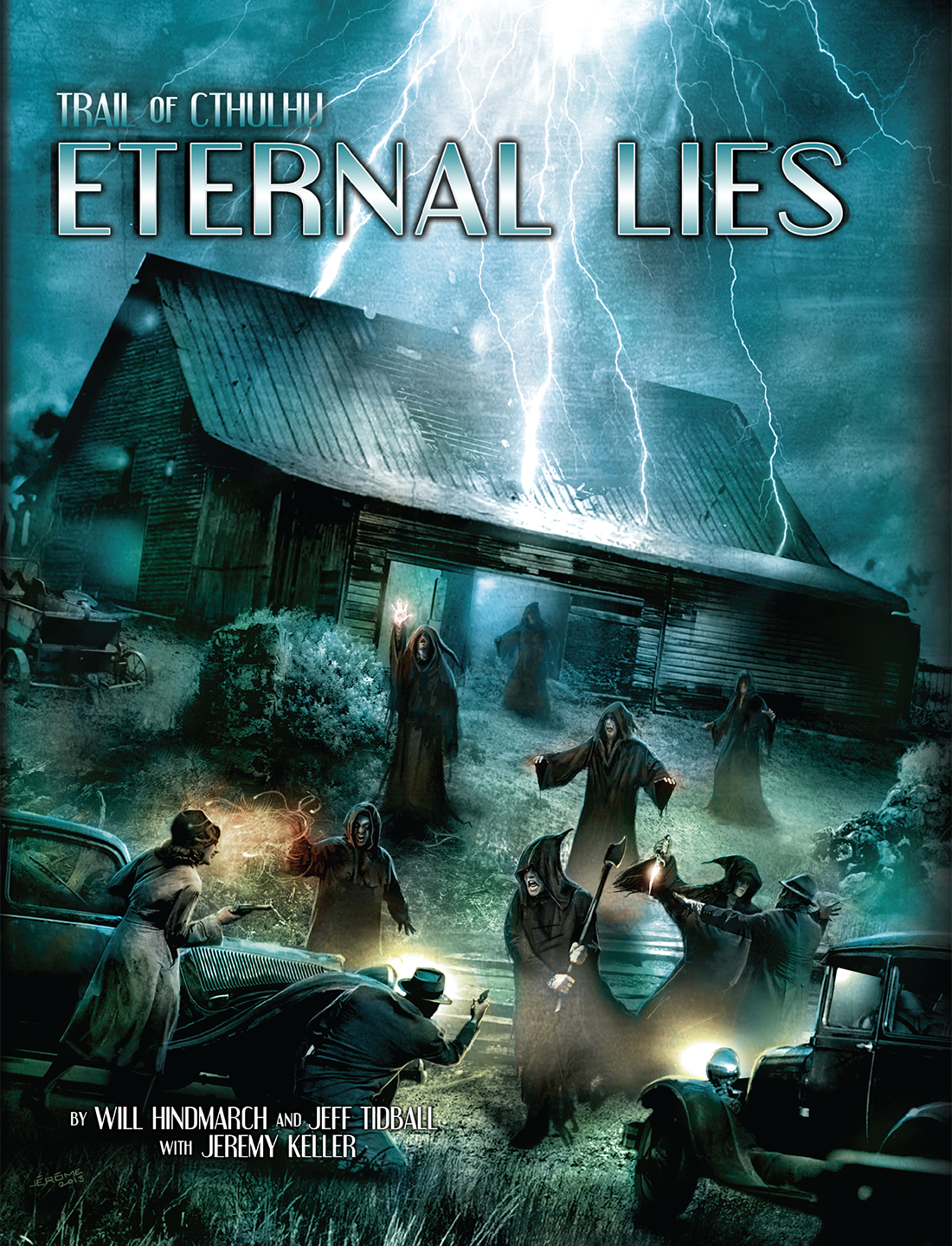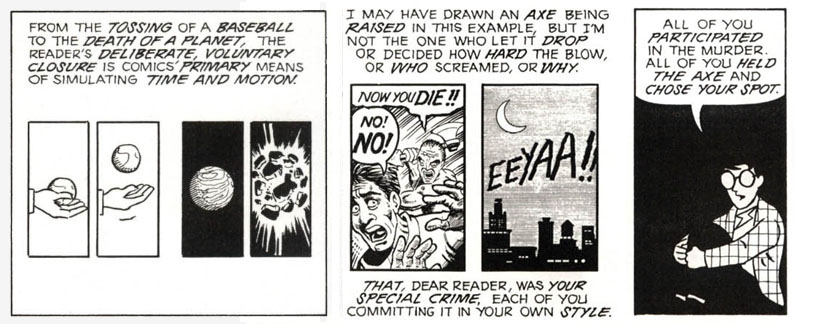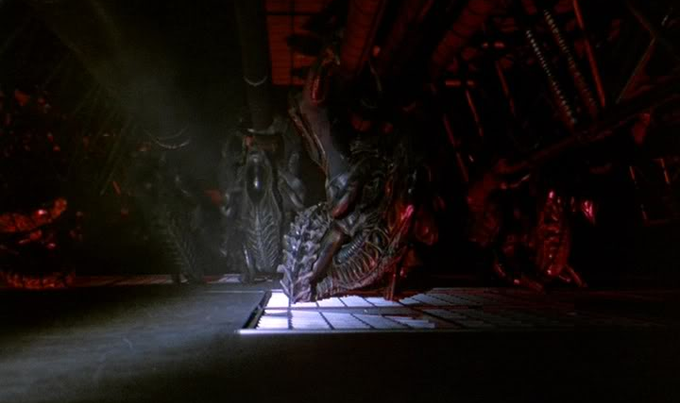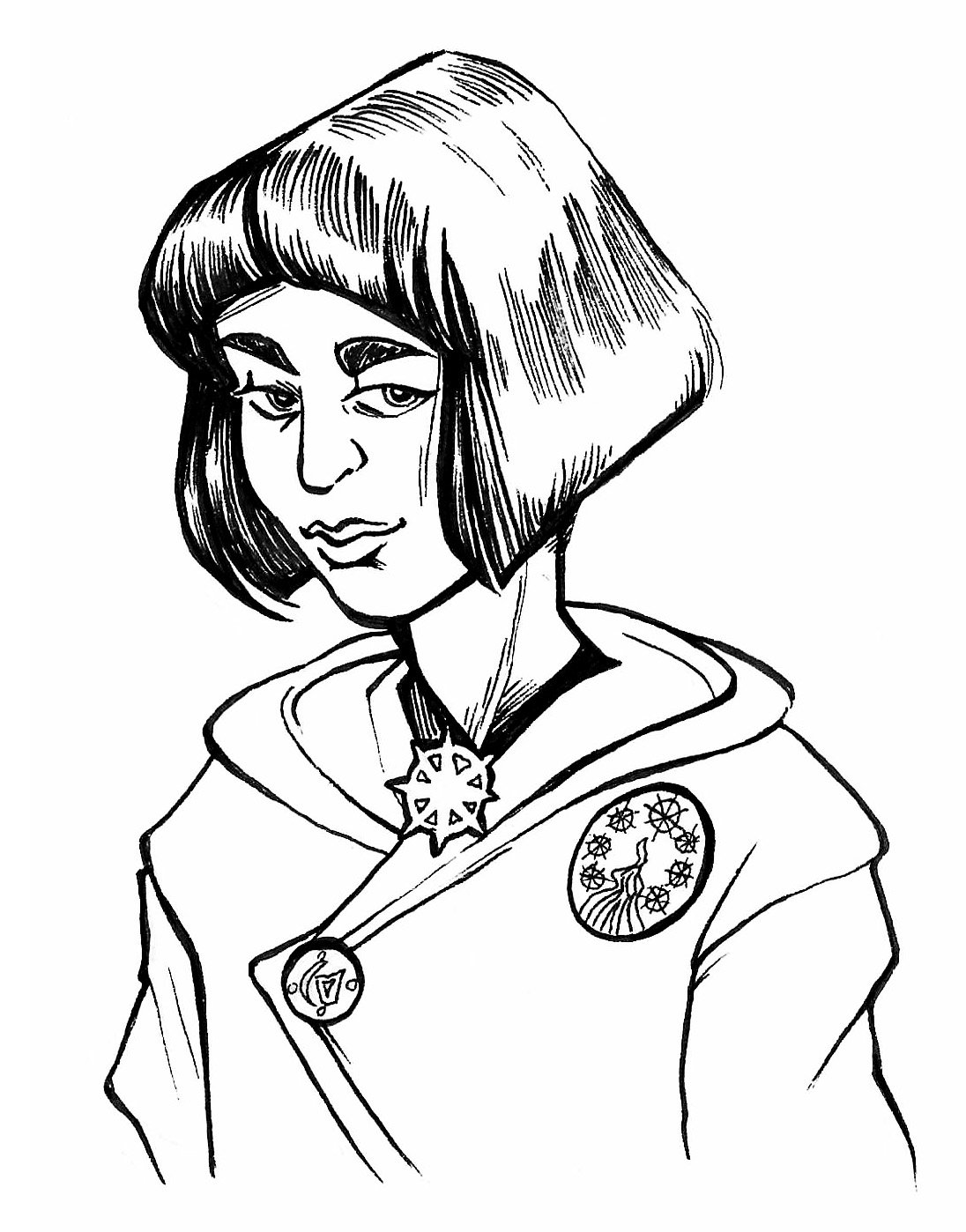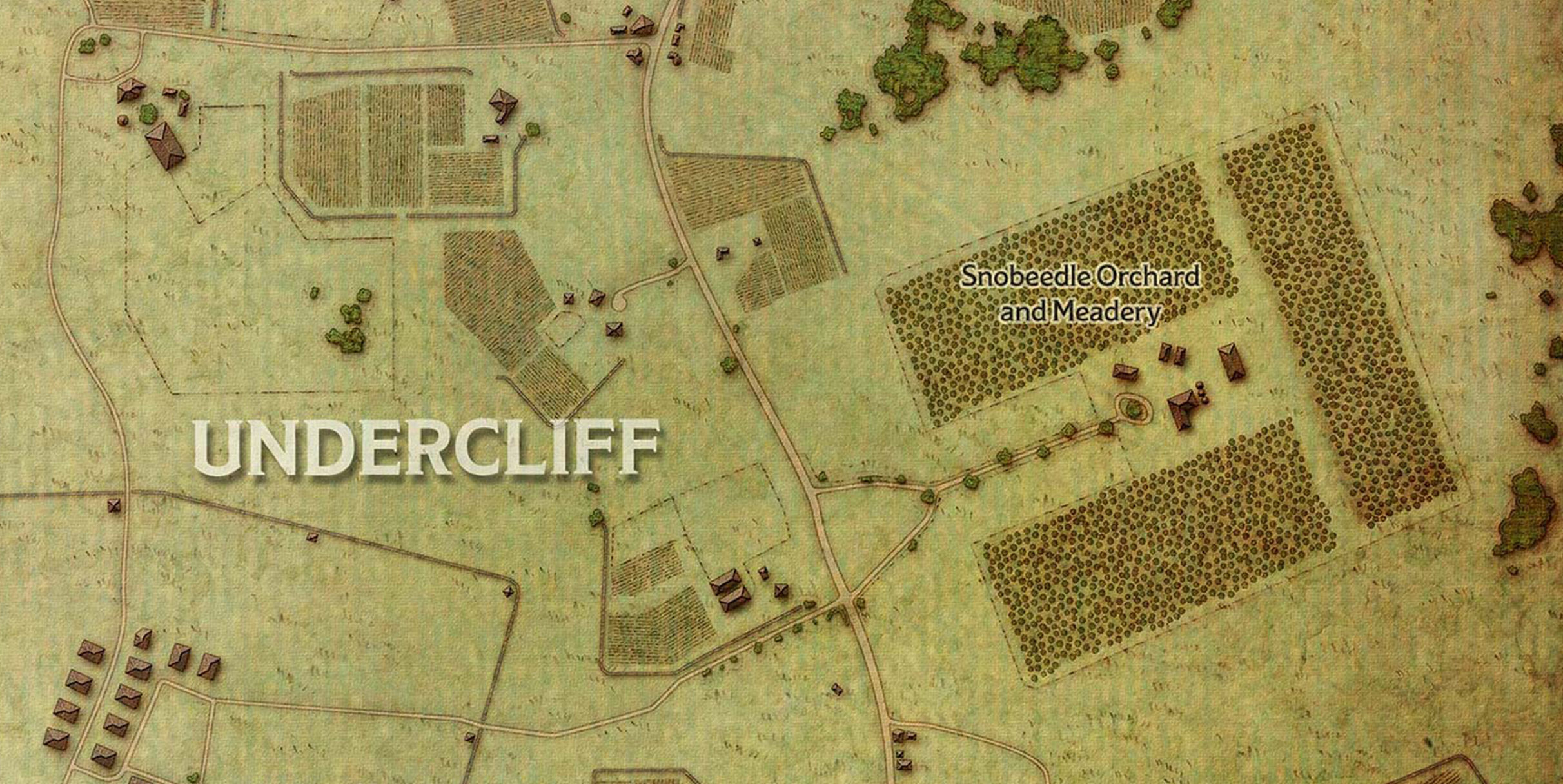
The PCs kick in a dungeon door.
Description #1:
With the sharp crack of splintering wood, the door smashes open, revealing a room about forty feet across. The high, curved walls are lined with built-in shelves of cherry wood filled with books and warmly lit by a crystal chandelier that hangs from the middle of the domed ceiling. Five goblins are ripping books off the shelves, but their heads whip in your direction.
Description #2:
With the sharp crack of splintering wood, the door smashes open, revealing five goblins who whip their heads in your direction. The room is about forty feet across. The high, curved walls are lined with built-in shelves of cherry wood filled with books and warmly lit by a crystal chandelier that hangs from the middle of the domed ceiling. The goblins have been ripping books off the shelves.
Which description is more effective?
What we’re broadly looking at is whether it’s better to describe the monsters in a room FIRST or LAST.
(Disclaimer: Descriptions are an artistic expression and the given circumstances of any particular moment at the game table are limitless. So there will be a bajillion-and-one hypothetical exceptions to any general principles we might discuss. Think of anything I advocate here in the same way you’d interpret “don’t cross the line when shooting reverse angles” in film or “sentence fragments are bad” when writing fiction. Know the rules so you can break the rules.)
The argument for Monsters First is that it mirrors the crisis perception of the characters: If you opened a door and saw a slavering beast, all of your attention would be immediately focused on the monster. You wouldn’t take your time inspecting the rest of the environment and only THEN look at the monster!
It seems like a logical argument. The problem is that it ignores the actual experience of the characters: If you opened a door and saw a slavering beast, you would immediately want to REACT to that slavering beast. That’s the adrenaline-pumping crisis response (fight or flight!), and it’s why Monster Last is the correct technique. You want the player to be able to immediately react to the monster just like their character would. You don’t want to blunt that reaction by forcing them to wait until you’ve finished the rest of the description.
Note that this isn’t just a matter of associating the experience of character and player. It’s also about effective dramatic presentation: A director of a horror film, for example, wouldn’t follow up on a jump scare with an establishing shot that slowly pans across the scenery before showing the main character’s reaction to the monster!
Okay, but can’t we resolve this dilemma by just not describing the room? The character’s focus would be entirely on the slavering monster. If they’re not focused on the rest of the room, we just won’t describe it to them!
Description #3:
With the sharp crack of splintering wood, the door smashes open, revealing five goblins! Their heads whip in your direction.
Unfortunately, this approach ignores the limited bandwidth by which information about the game world is transmitted to the players (i.e., the GM’s voice).
Although the character may be fixated on the monster, their peripheral vision is immediately processing the environment: Where are the exits? Where can they hide? What are the defensible position? How can they attack? Not only can they take in the totality of their sensorium, they’re also capable of taking action while simultaneously continuing to observe their environment.
The player can’t do that: When they communicate their intended action to the GM, they’re monopolizing the same channel that would be used to give them a description of their character’s environment.
Two outcomes become likely:
First, the player will recognize the problem and ask clarifying questions to obtain the understanding of setting they’re lacking. (“Are there any obstacles that would stop me from charging them? Do I see anything I can dive behind?”)
Second, without understanding the environment, the players will take nonsensical actions. (You didn’t mention the giant chasm that runs across the room between them and the rabid mammoth, so now they’re charging straight into it even though that would be a ridiculous thing for their character to do? Whoops.) This, of course, will force you to stop and correct them, explaining the important context they didn’t know (even though their characters would have).
In either case, you’ve reverted to interjecting an environmental description between the revelation of the monster and the reaction (Monster First). Only it’s actually gotten worse because the presentation is now awkward and frustrating.
WHAT ABOUT A BATTLEMAP?
If you’re using a detailed battle map couldn’t you just reveal it to the players to provide essential environmental information? And then just verbally announce the five goblins in the room?
Sure thing! You could also use other visual references. Pictures are worth a thousand words. In terms of technique, though, this is still Monster Last: You’re use using the visual presentation to handle the room description.
(Or, at least, to make that presentation more efficient: I’ve found that even the best visual aids usually benefit from additional verbal details. The great thing is that you can multitask, usually delivering the additional details at the same time that you’re drawing or revealing the visual reference. The usual single channel of information at the game table briefly becomes multi-channel, which is great!)
WHAT ABOUT INITIATIVE?
Wait a minute. What about initiative?
We’ve been talking about that moment of instantaneous response as if it looked like this:
GM: Five goblins are ripping books off the shelves, but their heads whip in your direction. What do you do?!
Player: I yell, “Fire in the hole!” and throw a fireball in the room.
But doesn’t it actually look like this?
GM: Five goblins are ripping books off the shelves, but their heads whip in your direction. Roll initiative.
(rolling dice)
Player: 14.
Player: 8
Player: 21!
Player: 15.
Player: 16.
GM: (also rolls dice and does math) … okay. Looks like Bob is first. What are you doing, Bob?
This is actually something I addressed in the very first Random GM Tip I posted to the Alexandrian:
Have your players roll their initiatives at the end of combat. Use this initiative for the next combat. (Initiative modifiers essentially never change, so it doesn’t really matter when you roll the check.) When it looks like the PCs are about to encounter something, roll for its initiative and slot it into the order. If they don’t encounter it for some reason, no big deal.
Using this method, by the time combat starts, initiative is already completely resolved. As a result, there’s no delay while you ask for initiative, the dice are rolled, your players tell you their results, and then you sort the results into order. This allows you to start combat off with a bang and keep the ball rolling with that same high intensity. It means that when the players are ambushed, you can maintain that adrenaline rush of surprise instead of immediately undermining it with the mundane task of collecting initiative.
This method also means that initiative results are generally being collected at a time when other bookkeeping chores are being done anyway: After the heat of battle, wounds are being healed; corpses are being looted; equipment lists are being updated; and options are being discussed. Juggling a few extra numbers does not detract from that moment.
And you’ll notice that the reason for moving the resolution of initiative is the same reason for using Monster Last scene description: To capitalize on the moment of reaction to drive the players’ excitement into launching the new scene.
THE REACTION POINT
I’ve been talking about the initiation of combat, but there’s a general principle here:
- Identify the reaction point (the point at which your players WANT to react);
- Focus your description to that point; and
- Clear away any detritus that gets in the way of the players immediately reacting.
The stronger the players’ desire to react, the more important this becomes.
You can also think of the reaction point as being literally the point where you’re asking the players for a response: You want that point to be as interesting as possible because you want to provoke a strong response from the players. Because that’s what will drive the action forward in interesting ways, which will let you easily frame the next reaction point to be as interesting as possible.
Examples outside of combat might include:
- Even though you just rolled the random wilderness encounter, make sure to set up the terrain first before describing the merchant’s wagon coming over the hill.
- Noticing that the eyes of the painting in the haunted house are following you should probably be the last thing described in the room.
- A beautiful, blue-haired man blows you a kiss from across the tavern’s common room.
- They notice someone following them.
- The Federales warchief demands the ship’s instant surrender.
Now, here’s the dirty secret that sort of inverts the idea of putting the most interesting thing at the reaction point: If you instead want the players to preferentially react to something in an otherwise undifferentiated list, put it at the reaction point. Psychologically this is due to recency effect. (The other strong position is to mention something first due to primacy effect. But for immediate choices – i.e., a direct response to a described scene – Miller & Campbell, 1959 identifies the last position as the stronger preference.)
For example, if there’s a pit trap under the fancy tabaxi rug in the middle room, drop the description of the rug in the middle of the room’s description and mention the shelves covered in knick-knacks on the far side of the room last: You increase the odds that a curious PC will cross the room (and the rug) to check out the shelves first.

